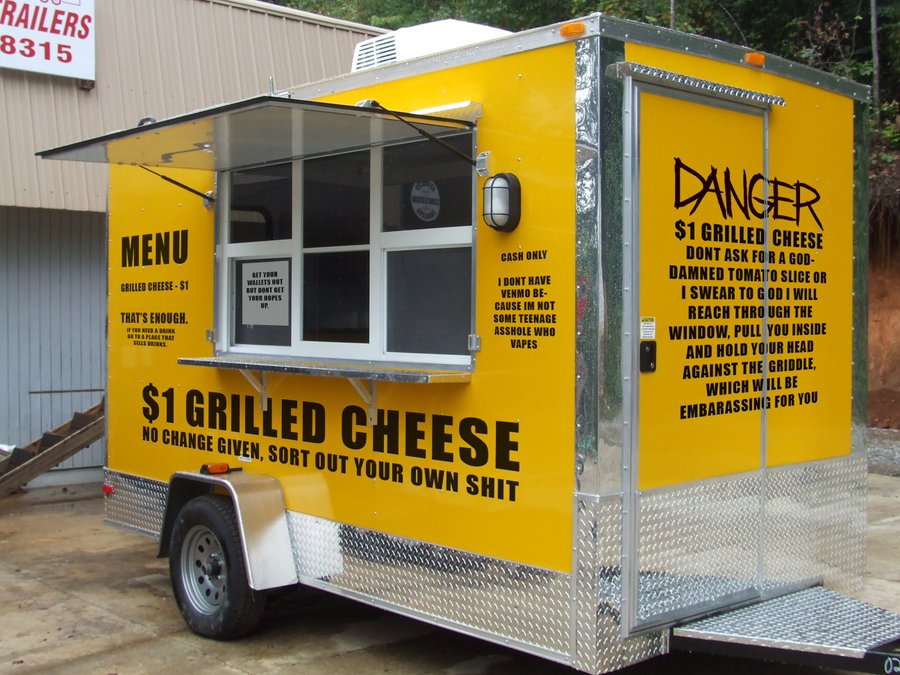The best marketing strategies of all time are always about the basics of human behavior.
After all, if you’re not able to understand the psyche of your potential customers, no amount of ad spend can save your business.
Marketing is the most important part of growing a business—and if you’re looking for a marketing strategy that are truly potent, there are two things you should know:
- What are the best marketing tactics; and,
- How these marketing methods work best.
In this blog post, we have explained 18 powerful marketing strategies that can help any business get off the ground and reach its potential customers.
We have also shared easy tips for executing these marketing initiatives, and more importantly, 10 awesome marketing examples that have worked wonders for companies around the world.
Read on.
Table of Contents
What Is a Marketing Strategy?
A marketing strategy is a plan that covers how a company positions its brand image and products or services in the market, how it reaches new customers or clients, how much it spends on marketing each year or quarter, where it focuses more on distribution of organic content and paid ad spend, and other such key decisions that influence the overall marketing of the company.
The marketing strategy of any company is perhaps its most important asset, since it impacts how, when, and where customers discover the company and its products or services, and what image the customers form in their mind about the company and its offerings.
The Four Ps of Marketing Strategy: How To Create an Effective Marketing Strategy
The ‘four Ps of marketing strategy’ are often referred to as the pillars of developing a marketing strategy, as they implement all factors needed to market a product successfully.
The four P’s include key factors such as marketing to the right market, understanding what the customer wants, and also understanding why a product or marketing plan fails to meet these wants, among many other crucial influences.

Here are the four Ps of creating a marketing strategy:
- Product
- Price
- Place
- Promotion
Let us now understand each of these four factors in depth.
Product
The product forms the crux of any company. In order to understand the market and develop a marketing strategy, it is important to answer the most fundamental question – who needs your product and why would they need it, and how would they use it?
By understanding this aspect of a product, you will gain a new perspective on how to target your customer better and how to stand out from your competitors. An important responsibility of a marketing professional is to understand the quality and characteristic of a product and deliver it exactly as it is to the customer.

One key facet of marketing strategy is understanding the lifecycle of a product and having a plan in place to tackle challenges faced at each phase of the product.
Price
The price factor is the set amount a customer is willing to invest in your product or service. Determining the right price amount can be tricky.
A marketer must always consider various factors such as raw material costs, retail markup, competitor prices, etc., and most importantly, evaluate the product according to its real value.

Although this valuation is largely based on diversified factors, some companies might value their product higher to narrow the target to a higher economic crowd, while some brands might prove the product lower to appeal to a larger crowd.
Place
Place as a marketing strategy is nothing but the ‘marketplace’ where all the magic happens. The decision to know where best to sell your product is key to the marketing strategic plan.
Whether your product is primarily going to be sold online or in brick-and-mortar outlets, it is important to understand which playfield works best for your product.

For instance, if you are a luxury brand focused on major skin care lines, the best way to display your product would be through physical shops where customers can test and try your products.
Also, the ideal outlet would be established luxury outlets such as Sephora. The term place also represents marketing your product through the right channel to garner the attention of the right audience.
The goal of any marketing strategy is to reach the target audience. ‘Place’ helps guide your marketing plan in the right direction and helps achieve this goal.
Read also: Master the Art of Small Business Growth: An 8-Step Journey to Success
Promotion
Lastly, promotion.
Promotion is the final step and an important one when it comes to marketing strategies. Promotion is essentially letting the world know about your product, communicated effectively.
The promotion also helps consumers understand your product and how your product stands apart from your competitors. This component is multifaceted, not just adhering to advertising as one channel. Marketing plans such as public relations, advertising through the right channels, and an overall independent media marketing strategy is needed for a robust marketing game.
Promotion and place are important aspects of getting your product out there. Quite obviously, they go hand in hand. Both are needed to be in sync to reach the target audience at the right time.
A good marketing strategy example would be how ‘promotion’ influences or pushes a customer toward a purchase at an online store. This is especially true when it involves promotion on social media and the traffic it drives to the brand’s website or landing pages.
Read also: Get Noticed: 16 Creative Marketing Ideas for Small Businesses
Powerful Marketing Strategies To Grow Your Business Faster
All small businesses want a low-budget marketing plan. The problem, however, is determining which of the successful small business marketing strategies offer the highest ROI.
That’s why we are sharing a list of high-ROI marketing strategies that you can and should steal from the industry today.
#1. Set a Goal and a Budget
Every business needs a direction. Every marketing campaign needs to start with a marketing goal and a budget.
This is perhaps the only free marketing strategy in the world.
Without a marketing goal and a budget, it becomes exceptionally difficult to determine whether or not your campaign was successful.
Plus, according to CoSchedule’s roundup of 2018 digital marketing statistics, marketers that set goals for their campaigns are 429% more likely to report success.
As Forbes contributor Jayson DeMers says, this makes sense because:
“Goal-setting eliminates subjective perceptions of reality, making success objectively measurable. In that context, success isn’t a vague idea; it becomes demonstrable.”
Let’s take a look at a few tips for setting your marketing campaign goal and budget:
- Choose 1-5 KPIs to measure. The most popular KPIs to measure include qualified leads, traffic, and direct revenue.
- Set a realistic budget. The U.S. Small Business Administration recommends that you spend 7-8% of total revenue on your marketing campaigns.
- Focus on the process, not the goal. Once your goal is set, create a process for achieving it and use your KPIs to measure and continually improve that process.
#2. Build Your Influence
The most successful marketing campaigns help you achieve the highest ROI. Once you build your influence, you can use many more powerful marketing strategies.
With influencer marketing delivering ROI as high as $6.50 for every $1 spent, it’s quickly become one of the most effective marketing strategies for a small business.
This explains why influencers are finding their way into many social media promotional strategies used by small businesses.
To create a successful influencer marketing campaign, Entrepreneur contributor Murray Newlands recommends the following steps:
- Select your KPIs
- Focus on the social media channels where your target market is most present
- Find a credible influencer
- Plan your publishing schedule
- Consistently improve and measure your outcomes

#3. Leveraging Employees as Thought Leaders
Alternatively, you could always create influencers from your own employees. Often referred to as thought leadership, social selling and employee advocacy are becoming more popular with companies who want to amplify their brand message.
Going beyond simply resharing corporate posts, employee advocacy allows each one of your employees to become brand ambassadors and social sellers, sharing the content that makes the most sense for their individual industries while promoting your company — a good content marketing strategy.
In fact, according to LinkedIn, Salespeople who are using social media to sell are 51% more likely to hit their sales quotas over their less social-savvy peers—and they would know. LinkedIn was responsible for nearly 95% of conversions coming from employee advocacy posts in 2021.

#4. Champion One Social Channel
With the undeniable potential of social media marketing as a small business marketing strategy, it can be tempting to try and find success on as many social platforms as possible.
But, as B2C and B2B marketing strategy guru Neil Patel says, it’s best to focus on one social channel at a time:
“Jumping in head first and attempting to manage, say, four or five different channels can be overwhelming, and you’re unlikely to kill it at any strategy. Even if you’re a savvy marketer, you simply can’t devote the necessary time to extract the full potential of any single channel.”
To become a champion of one social channel, the team at Social Media Marketo recommends a 12-step process:
Image Source
#5. Build Rapport Through Email
With 59% of marketers claiming that email is their most effective marketing channel for revenue generation, this is one effective marketing strategy that you don’t want to ignore.
If you haven’t started building your email list, Social Triggers founder Derek Halpern recommends a few tips for getting started:
- Create a long-term content strategy to drive organic traffic to your website
- Create multiple opt-in offers
- Utilize an email list popup form
- Add a banner with an invitation to subscribe to your email list
You can use an email signature generator to create a professional email sign-off with links, banners, and call-to-actions.
For more details, check out this article on how to get more results from every email you send.
Read also: Experiential Marketing Ideas for ‘Next Level’ Brand Campaigns
#6. Blog Strategically
When done correctly, starting a blog is one of the absolute best ways to drive targeted traffic to your website.
In fact, marketers that effectively utilize blogs tend to get 67% more leads than those that do not. But that’s only if you’re doing it right.
To succeed with blogging, you should:
- Find your niche. Choosing a niche is one of the hardest but most important considerations before you start a blog, whether you’re looking to write reviews, sell products online, or general topics.
- Focus on quality over quantity. One long-form, comprehensive post (1,500+ words) is worth 5x a brief, non-informative post.
- Develop a promotion strategy before writing. Many expert content marketers recommend spending 20% of your time on content creation and 80% on promotion.
- Create evergreen content. When you create evergreen content (and update that content when necessary), your content assets compound their impact over time.
- Use photo editing tools like Instasize to curate your content.
- Promote your blog. Create a list of influencers that resonate with your product and start an outreach campaign using powerful outreach tools, requesting them directly or indirectly link back or speak about your blog.
- Design is everything. The way your blog looks can either pull in or push away potential readers, so consider using professionally made templates to create your blog.
#7. Conduct Research That Impacts Your SEO
With 70-80% of modern-day consumers ignoring ads altogether, ranking for targeted keywords has never been more important.
To rank in SERPs for keywords that can drive high-quality leads, there are a few simple tips that you should follow:
- Focus on low-competition, long-tail keywords. If you own a wedding business, you’re not going to compete with David’s Bridal for the keyword “wedding dress.” Instead, you should focus your efforts on low-competition, long-tail keywords that are relevant to your audience.
- Utilize tools like SE Ranking, SEMRush, or KWFinder. While it may be tempting to use Google’s Keyword Planner, it’s been proven that they hide many low-competition keywords to increase ad spend. Tools like SEMRush and/or KWFinder make it incredibly easy to find high-ROI keywords that can drive high-quality leads to your website.
#8. Teach Others
As Forbes contributor Brian Sutter says, “Teach, don’t sell…”
“The idea of teaching instead of selling seems to turn marketing on its head, and yet it’s at the core of content marketing. ‘Teach, don’t sell’ is exactly what makes content marketing different from advertising.”
This is a concept that far too many modern-day marketers misunderstand. And it’s why many businesses struggle to differentiate their message through content marketing.
To ensure you’re teaching your audience the right way, Sutter recommends that you:
- Don’t include CTAs that ask readers to buy something in every piece of content
- Focus on your potential customer and what they want to know, not what you want to tell them
- Be generous with the content you offer
Read also: 14 Creative Social Media Contest and Giveaways Ideas That Work
#9. Survey, Listen, and Learn
Marketing research plays a crucial role in the success of your small business marketing strategies. After all, if you don’t know the audience you’re marketing to, it’s going to be difficult to communicate with them effectively.
One of the best ways to perform market research is through the use of surveys. To get the most out of this successful marketing strategy, Survey Monkey recommends that you:
- Define your marketing objectives for the research
- Set timelines
- Segment your audience to determine who receives which survey
- Use proven tools that allow you to collect and analyze data
#10. Re-examine Your Landing Pages
One small business marketing strategy that can immediately impact conversions is the focus of your landing pages.
While most conversion experts are quick to recommend that you should always start your B2B marketing campaign with a dedicated landing page, many fail to mention the importance of focusing on a single goal.
For your landing page to succeed, your focus should be on getting your readers to take a single action. After all, if you have 20 links on your landing page, your attention ratio is 5%. With one link, that ratio is 100%.
This simple act of focusing on getting your readers to take one action on each page can do wonders for your conversion rates.
If you aren’t using landing pages to help sell your products or services, you could be missing out on countless potential customers.
#11. Stand for Something
A recent McCann study found that 42% of American consumers believe that brands and companies are less truthful today than they were two decades ago.
Translation: Almost half of all consumers don’t trust modern-day businesses.
With this in mind, standing for something that’s important to both you and your target audience can become a huge differentiation factor. Take, for example, the ALS ice bucket challenge that went viral and raised $220 million for the ALS Association.
Here are a few ways you can do it:
- Sponsor a charitable event
- Join forces with your employees and customers for a fundraising event
- Donate your product/service to a charity event
Read also: Master Email Marketing Automation Strategy: Tips & Examples
#12. Leverage Social Media Advertising
Social media and mobile marketing have certainly changed the game as far as how modern-day marketing works.
But while many small businesses focus their efforts on the free and low-cost marketing opportunities that social media platforms offer, ads have also proven effective in driving ROI.
Unsurprisingly, Facebook dominates the world of social media advertising, as over 93% of marketers use some form of Facebook ads in their social media marketing strategy.
To get the most out of your Facebook ad campaign, there are a few things you’ll want to focus on:
- Ensure that you’re creating an attractive offer
- Track the right KPIs
- Utilize attractive images and/or videos
- Set clear, measurable goals
Or, consider using an ad tool, such as HubSpot’s CRM, to get accurate analytics on your social media ads and determine which ones have the best ROI.
#13. Leverage Google’s Local Offerings
As a small business, local Search Engine Optimization can make or break your business.
And while determining the driving forces behind which local businesses rank highest in Google is still somewhat of a mystery, the below graphic from Moz breaks it down in an easy-to-understand way:
By focusing on optimizing local SEO for the above factors, you can quickly position yourself for success in the SERPs.
#14. Prioritize Retention
It’s hard to debate the importance of customer retention to the long-term success of your small business.
The probability of selling to an existing customer is approximately 65%, and that of selling to a new customer is about 10-15%. To ensure that more of your customers continue to purchase from you, growth marketer Sujan Patel recommends that you focus on improving your onboarding process.
To do it, Patel says that you should:
- Establish the point where you’re losing customers and focus your efforts there first
- Define your customers’ definition of success and help them achieve it
- Help your customers achieve quick wins
- Create evergreen resources
Read also: 14 Small Business Marketing Truths No One Bluntly Tells You
#15. Woo Your Audience
Storytelling is a powerful tool for any marketer. It can drive up conversion rates by as much as 400%. While it can be difficult to measure, there’s little doubt that storytelling can effectively market your business and attract a loyal following.
To do that, Forbes contributor Mike Kappel recommends these essential tips for business storytelling:
- Determine the parameters (who, what, when, where)
- Be completely authentic
- Determine the outcome
- Be consistent
- Allow customers to become part of the story
#16. Explore Partnerships
Exploring and utilizing partnerships with other small businesses can exponentially boost your business’s revenue potential.
As Entrepreneur contributor Web Smith points out:
“You can survive alone, but you’ll only really thrive when you plug into the community around you.”
To develop effective partnerships, Smith recommends that you:
- Be upfront about your business
- Ask the right questions
- Focus on partnership opportunities that can be mutually beneficial
#17. Enable Your Audience to Get to Know, Like, and Trust You
Webinars have become a go-to marketing strategy for tech businesses with a good digital presence.
However, small businesses that are not so tech-savvy are missing out. With webinars being noted as among the top 5 most successful marketing strategies, you need to take advantage of this trend.
Amy Porterfield uses webinars as a critical component in building her customer base. She says webinars help her audience get to know, like, and trust her.
To borrow from Forbes Contributor Ashley Stahl, a webinar host should:
- Focus on creating amazing content
- Choose a time that’s convenient for your target audience
- Prepare, prepare, prepare
#18. Promote a Free Consultation
While it will undoubtedly vary by industry, the conversion rate of offering free consultations makes it one of the most effective small business marketing strategies trending today.
In fact, in some cases, even medical businesses have seen conversion rates as high as 75% when they offer free consultations. Let’s take a look at a few tips to raise the likelihood of turning a lead into a customer through your free consultation:
- Focus on helping the customer and creating a quick win for them
- Ask targeted questions
- Show them why and how you can help them
A free demo goes a long way in clarifying the customer’s doubts and building trust.
#19. Bonus Strategy: Write a Column
Writing a column for well-known publications that share your target audience is a great way to drive traffic to your website and generate brand recognition/brand awareness.
Josh Steimle, for example, writes for publications like Forbes, which has provided great leads for his business.
This tactic, which is also known as guest posting, can also help you develop partnerships with businesses and website owners that share your target market.
To succeed with this strategy, Copyblogger recommends that you:
- Focus on the needs of the editor and column you intend to write for
- Create amazing content
- Become a go-to resource
- Don’t be overly promotional — focus on providing value instead
Marketing Done Right: 10 Amazing Examples of Marketing Strategies
Now that we have seen the four pillars of marketing, we have curated marketing strategy examples with different perspectives to have a deeper understanding of how to develop a marketing strategy.
Keeping It Real: Examples of Marketing Strategies From Big Brands
Let’s hear it from the big brands, shall we?
#1. Spotify: Customizing User Experience
Today, the well-known music app Spotify is synonymous with music listening. But, how did this Swedish brand become a huge hit globally among so many streaming music services?
The answer is user experience. Spotify opened a new avenue to listeners by providing a tool to customize their experience with playlists, filtering by genre, and choosing music based on their mood.
Sports also uses AI to understand the user’s listening habits and curate a specific playlist based on these habits to their taste.
This unique approach to an elevated user experience is an effective marketing strategy that has made Spotify a global leader in the music streaming industry.
#2. Nike: By You for You
What better way to market your product than your customers themselves?
That is exactly what Nike did with the ‘Nike By You’ social media marketing campaign. In this innovative approach to developing a marketing strategy, Nike increased 22 % of their revenue through this campaign alone.
In Nike By You (2015), customers were the designers for the new Nike dunk low. But this approach has been extended today to all their products today.
By allowing a customer to have a unique experience of customizing their own shoes, Nike has provided a fine example of the marketing strategy by making the customer the driver of the campaign.

Nike has used technology to its fullest advantage and focussed on customer-oriented themes to drive the brand’s marketing strategies.
Smart!
#3. GoPro: User-Generated Marketing Campaign
GoPro is a staple name when it comes to mountaineers, athletes, adrenaline junkies, and pretty much anyone who’s on an adventure-seeker. This is due to the unique product, the GoPro camera itself, and the quality of the content it produces.
The best testimony of a product is the user-generated content for the product itself. Now GoPro cameras are popular in recent times due to the number of ordinary people, without filmmaking backgrounds, using them to create stunning content, with great cinematography.
GoPro sought to implement this particular marketing strategy to promote its product on social media.

With the videos submitted by users themselves, the videos are shared on social media, which inspires more people to shoot stunning videos and post their own content.
Hence this positive cycle has increased sales and recognition for GoPro and its stunning products. User-generated content for the win!
#4. McDonald’s: The ‘Glocal’ Campaign
McDonald’s is everyone’s favorite fast food chain.
We all love it!
But how does McD ensure we all stay lovin’ it? McDonald’s social media marketing strategy has been well-received globally due to its adaptability to local cuisines.
As part of their ‘Glocal’ campaign, they have introduced local dishes as part of their extended menus in international outlets. For example, in the middle east region, McArabia has a specialty ‘McShawarma’ dish, which has been quite a success in local marketing.

This type of localized marketing strategy has helped McDonald’s appeal to a local audience while growing globally as the world’s favorite fast-food chain.
#5. Sephora: Winning with Loyalty
Sephora, a well-known cosmetic giant, used the most powerful marketing strategy to its advantage, customer loyalty. With a well-planned marketing strategic plan, they introduced a loyalty program with different classes of divisions based on points.
Known as the ‘beauty insider’, based on the annual spending of a customer, they are divided into three primary categories. The highest bracket is extremely lucrative to customers with high-quality incentives and discounts.
This concept of encouraging customers to spend more on their brand in order to get enticing rewards in return has made Sephora successful today.

Small to Success: Small Business Marketing Examples That Made It Big
We know big brands have the resources to pull off some of the best marketing strategies.
That said, what about small businesses?
#1. $1 to $1 Million Success Story: The Grilled Cheese Truck
The grilled cheese truck is a simple small business idea of a food truck serving grilled cheese sandwiches. The company was initially started in Los Angeles in 2009 and soon expanded across additional markets all over the country.

This B2C food truck became an overnight success with a rapid expansion to three additional markets across two states due to its extensive social media marketing efforts.
By this quarter of 2014, the company was churning out almost $1 million in sales.
Key Notes: The Marketing Strategy Implemented
- Extensive Social media marketing with a steady loyal following to increase visibility.
- Using Social Media to announce locations, discounts, and events.
- Strategic partnerships with local businesses to increase brand awareness across different regions
#2. Impactful Influencer Marketing: My Makeup Brush Set
My Makeup Brush Set, initially a small branch of AN commerce, offers professional makeup brushes at an affordable price range. Founded in 2014, this brand and concept has steadily grown but failed to reach the most important audience, pool-millennial women.

To target this particular audience profile, they specifically tailored their social media campaigns to the likes of teenage girls. Unique, appealing content with creative videos and a direct response campaign was introduced to increase their visibility.
They also, very smartly, partnered with key influencers to drive their marketing campaigns even further. The result – their sales increased manifold and they were able to expand their business to further states and globally.
Key Notes: The Marketing Strategy Implemented
- Tying with key influencers and staying on trend made the theme known to a wider global audience, both offline and online.
- With creative videos and targeted ads, specific to a set target profile (women aged 18-35), they were able to increase their revenue and sales exponentially.
- With the help of ‘email marketing’, the brand was constantly in touch with customers and was able to market offers and exclusive promotions, to further strengthen its marketing stronghold.
#3. The Cat’s out of the Bag: Content Marketing and Saddleback Leather
Saddleback Leather- a premium leather bag company was already a household name in a few years after its inception.
But with the advent of the internet, the brand released a strong social media presence that was needed to expand and keep the revenue flowing. With beautiful products to display and promote, a graphical representation wasn’t simply enough.

To tie in with its secure social media presence, the brand started a substantial and steady’ content marketing campaign. Now, content marketing does not mean constant updating and long blog posts.
Quality, engaging content is needed to be a hit with customers. Saddleback Leather knew this trick and has done a great job pioneering content marketing to engage with potential customers.
Not only is the content great and attractive, but it also showcases the beauty of its products brilliantly.
Key Notes: The Marketing Strategy Implemented
- Strategic content marketing plan that showcases their products with high-quality and engaging content.
- Providing lifetime guarantee for their quality products to build a steady but strong and loyal customer base.
- Using eCommerce to further strengthen their sales and marketing drive.
#4. Simple Idea, Unique Execution: John’s Crazy Socks
Who would’ve thought that the simple idea of selling socks could one day make it to Forbes?
John Cronin did!
Started in 2016, John’s Crazy Socks was initially started to raise funds for Down’s syndrome awareness.
But what made this brand a success is how the social media marketing was focused on building a community who could relate to the back story and were inspired to buy the products. Their tagline ‘Socks that make a difference’ resonated with thousands across the country and eventually around the globe.

To capitalize on this ripple effect, they steadily introduced new creative promotions to encourage new buyers to make the purchase.
Key Notes: The Marketing Strategy Implemented
- What made John’s Crazy Socks a crazy night success story is the social media influence and constant engagement with the community of like-minded people itself.
- Paired with social media marketing strategy was the creative promotion such as the ‘sock of the month’ which made the brand even more popular
- A personalized thank you note for each customer addresses a humane touch and strengthens the bond between the customer and the brand, making it unforgettable.
#5. Smartly Tattly: Tattly’s Smart Marketing Strategy
Businesses today, small and big, are constantly facing challenges with competition, market saturation and so many choices for consumers in this digital era. Standing out from the competition is quite challenging and requires a colossal amount of effort.
Tattly, a unique temporary tattoo company, came up with different strategies to make a mark and stand out. Temporary tattoos are often focused on children. But Tattly sought to change the narrative by introducing aesthetic, and beautifully illustrated temporary tattoos for adults as well.
By branching out in this manner, they were able to expand their brand profile to a much wider audience. Apart from this proposition they also had a strong content marketing campaign to do the heavy lifting for the beans in terms of furthering their brand awareness.
The role of temporary tattoos for adults is still a niche and Tattly capitalized on this aspect and focussed their marketing efforts on this.
Key Notes: The Marketing Strategy Implemented
- Expanding brand awareness and knowledge on temporary tattoos through extensive content marketing
- Using social media campaigns to market to the right audiences, thus further on the reach globally
- Strategic partnerships with artists globally to create unique tattoo designs and market them in the right way.
Conclusion
In this blog post, we have shared with you 18 (actually, 19) of the best marketing strategies of all time. We sincerely hope that you have enjoyed reading and learning from them.
Do you know any other digital marketing strategy not listed here that has proven to work for businesses? If YES, do let us know about it in the comments section below.
Also, please share this post with your colleagues and friends who might find these online marketing strategies helpful too. If you need a free marketing software, remember that EngageBay is designed for novice marketers and small businesses.
This all-in-one email marketing, landing page builder, and customer support software is free to use for a small number of contacts, and super affordable when you scale.











Those are some really great strategies. Better start working hard on those strategies. Thanks
Wow, you have mentioned some of the best marketing strategies..Gonna try some
This article is a goldmine of marketing wisdom. It succinctly presents 18 powerful strategies that can elevate any marketing campaign. Each tip is a gem of insight, offering actionable advice to boost brand visibility and engagement. A must-read for marketers seeking to drive success and stand out in today’s competitive landscape.
It’s uncommon to come around a post that is actually both
entertaining as well as informative. You
have actually nailed it!